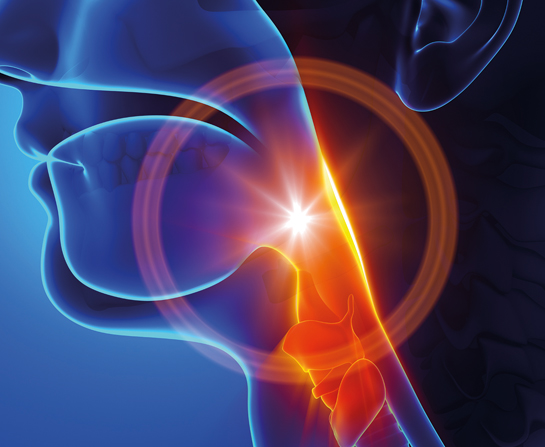When the Throat St(r)eps Out
April 28, 2022 Return


Dr Andrean Husin Senior Lecturer & Neurosurgeon, Faculty of Dentistry, Universiti Teknologi MARA (UiTM)
Strep throat is a common condition that affects both old and young. According to scientific literature, its many causes include excessive and prolonged use of the voice, common cold and many other causes.
What is it, actually?
Strep throat is actually a type of inflammation of the throat caused by a type of bacteria, the Group A streptococcal. Streptococcal is a type of bacteria that appears round (coccus) when viewed under the microscope in high magnification, usually seen in pairs or chains. See Figure 1 for an example.

Figure 1: Streptococcus pyogene
Common symptoms to watch out for
Common symptoms primarily affect children between 5 to 15 years old. They experience a sudden onset of fever, sore throat and enlarged lymph nodes in the neck region with redness in the throat region. Some children may have swollen and painful tonsils. These presentations may actually overlap with a viral infection such an influenza (known commonly as ‘flu’).
Getting over strep throat
As a general rule, streptococcal sore throat is self-limiting (meaning that they usually resolve without medical intervention) but children and adults with certain systemic diseases (which may weaken their immune system) may need treatment with antibiotics. According to scientific literature (which has discussed strep throat treatment with antibiotics quite intensively for a long time), there is no hard and fast rule when it comes to these antibiotics; healthcare professionals should decide on the best course of treatment on a case by case basis.
Medication
- Antibiotics – There are many articles written proposing and opposing the use of antibiotics in strep throat infection. Taking into consideration individual patients, your doctor may prescribe antibiotics such as penicillin or cephalosporin. The Infectious Disease Society of America updated their Clinical Practice Guideline in 2012 recommending the use of antibiotics between 5 to 10 days (depending on the type of antibiotics) in order to eradicate bacteria from the throat.
Home remedies
- Lymphatic massage This can improve throat pain in 20 to 40 minutes by helping the natural drainage of lymph. The technique described a gentle, steady pressure starting from under the jaw, moving towards the collarbone.
- Honey. Drinking warm tea with honey or plain honey has been reported to soothe throat pain. Studies have shown that honey has anti-bacterial properties.
- Throat gargle. Mix salt and hot water, and using the solution as a gargle every hour. You can also use antiseptic mouthwash for this purpose.
- Vitamin C is known to shorten the recovery period of any sickness by boosting the immune system. A daily dose of 2-3 gm of vitamin C over a span of several days should be appropriate for an adult with strep throat symptoms. Note that the recommended daily dose of vitamin C is about 40 mg at birth and increases to about in 90 mg in adults. This voluntary ‘overdose’ of vitamin C may work for some people.
If you like this article, do subscribe here.
